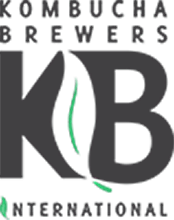Symbiosis between Microorganisms from Kombucha and Kefir: Potential Significance to the Enhancement of Kombucha Function
Authors:
Zhiwei Yang, Feng Zhou, Baoping Ji, Bo Li, Yangchao Luo, Li Yang, Tao Li
Abstract:
Gluconacetobacter sp. A4 (G. sp. A4), which had a strong ability to produce d-saccharic acid 1, 4 lactone (DSL), was the key functional bacteria isolated from the kombucha preserved. This paper investigated the interaction between G. sp. A4 and ten different strains of lactic acid bacteria (LAB) obtained from kefir. The result suggested that the LAB promoted DSL production of G. sp. A4 to different extents, ranging from 4.86% to 86.70%. Symbiosis between G. sp. A4 and LAB was studied. LAB's metabolites, xylitol, and acetic acid were utilized by G. sp. A4, and it promoted the growth of G. sp. A4 and yield of DSL. Therefore, in developing starter cultures for the kombucha fermentation process, a mixed flora of LAB and G. sp. A4 would be the optimal combination.
Keywords: kombucha . gluconacetobacter sp . kefir . lactic acid bacteria . symbiosis .d-saccharic acid 1, 4 lacton
Country: China
Citation: Applied biochemistry and biotechnology, 160(2), 446-455.
Study Mailing Address:
College of Food Science and Nutritional
Engineering, China Agricultural University, 17 Qinghua East Road, Haidian
District, Beijing, China
Date Updated: February 11, 2021
 0 people like this study.
0 people like this study.